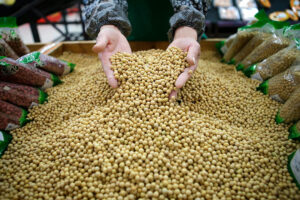PHILIPPINE soybean meal imports will likely increase 3.1% to 3.35 million metric tons (MMT), according to the US Department of Agriculture (USDA), to accompany an expected rebound in the hog industry.
The increase in imports for marketing year 2025/26 is also driven by increasing demand from the broiler, layer,aquaculture, and pet food segments, the USDA said in a report, citing its Foreign Agriculture Service.
It also noted expectations of a “gradual rebound in the swine industry.”
The US accounts for 80% of the Philippines’ soybean meal imports.
BusinessWorld has reported that the Philippine poultry industry is expecting feed prices to fall as US producers seek new markets after being shut out of China by retaliatory tariffs.
China, which is now facing a 104% charge on its exports to the US, has announced retaliatory tariffs of 84% on all US goods.
Soybean meal makes up between 5% and 30% of the composition of feed sold in the Philippines, the report noted, with demand from the broilers and aquaculture industries accounting for 25-30%.
The USDA report said domestic soybean production will likely remain under 1,000 MT in 2025/26.
The USDA said Philippine imports of soybean will increase 2.1% year on year to 147,000 MT in MY 2025/26 to meet the increasing demand from food and beverage processors, specifically for soy sauce and soy drinks.
It said soybean crushing demand for MY 2025/26 will remain flat, noting that the Philippines has only one crushing facility for processing imported soybeans into oil and meal.
Meanwhile, demand for soybeans for food use will rise 2.9% to 71,000 MT in MY 2025/26 due to increase in population, rising household incomes, and healthy eating trends.
Soybeans are processed into various food products such as soymilk, soy sauce, soy oil, tofu, bean curd, and fermented soybean.
“There is rising awareness among the consumers in the Philippines on the health benefits of soy products, specifically soymilk, that appeals to the health-conscious consumers,” the report said.
The US remains the largest soybean supplier, with 85% of the market in MY 2023/24, followed by Canada (7%) and Argentina (8%). The remaining suppliers in MY 2023/24 were China, Malaysia, and Singapore (with a combined 1% market share). — Kyle Aristophere T. Atienza

